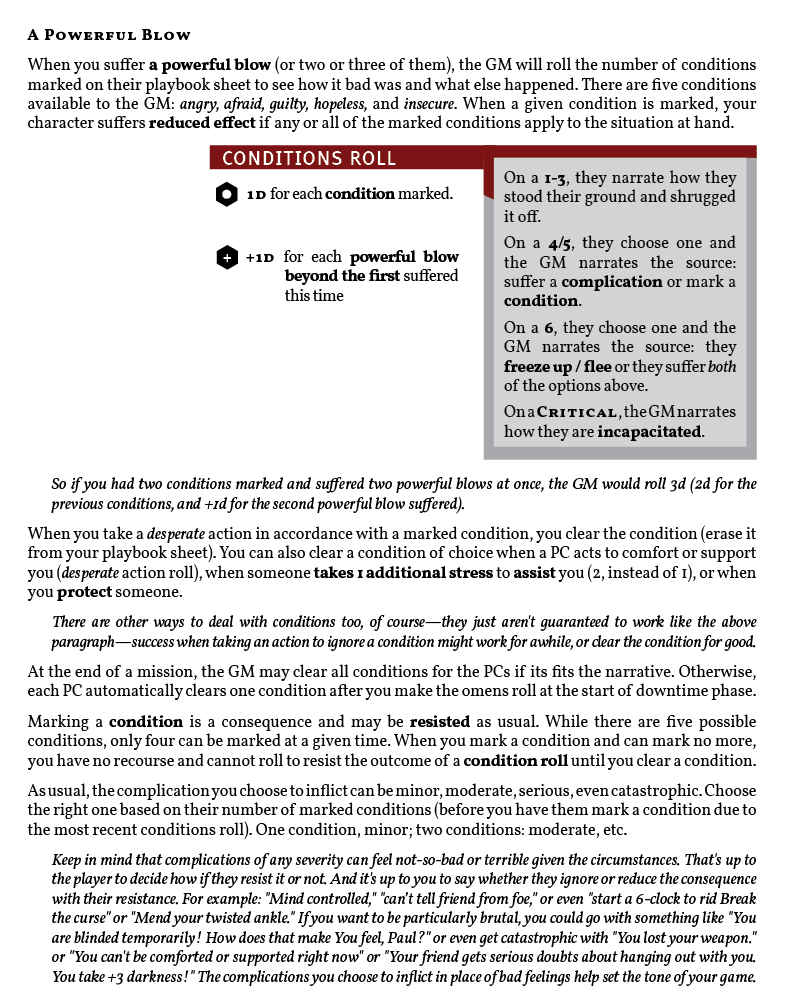This is just an option I want to share with the community at large. Do with it as you wish. Feel free to comment on how you feel this changed your game. Note: This is a direct riff off the work of Brenden Conway and the conditions system presented in the Masks tabletop RPG (young superheroes PbtA).
And here is the text from this entry for those wanting to copy pasta…
Use this option to get rid of the harm system completely. Instead, PCs can suffer conditions (like angry, afraid, etc.) which may take them out of the action.
When a PC would suffer harm as a consequence, they instead suffer a powerful blow. Use the available harm boxes on the playbook sheets to track marked conditions (the level is no longer important, only the quantity).
When a PC suffers a powerful blow, the GM will make a condition roll to see how bad it is for them using a pool of dice equal to the number of conditions marked on the character’s playbook sheet.
Condition Roll
Roll 1d for each marked condition.
- On a 1-3, they narrate how they stood their ground and shrugged it off.
- On a 4/5, they choose one and the GM narrates the source: suffer a serious complication or mark a condition.
- On a 6, they choose one and the GM narrates the source: they freeze up / flee or they suffer both of the options above.
- On a Critical, the GM narrates how they are incapacitated.
There are five conditions available to the GM: angry, afraid, guilty, hopeless, and insecure. When a given condition is marked, your effect is reduced when you act to defy it. When you take a desperate action in accordance with a marked condition, you clear the condition. You can also clear a condition of choice when a PC acts to comfort or support you (desperate action roll), when someone marks 1 additional stress to assist you (2, instead of 1), or when you protect someone.
A condition is a consequence and may be resisted as usual. While there are five possible conditions, only four can be marked at a given time. When you mark a condition and can mark no more, you have no recourse and cannot roll to resist the outcome of a condition roll until you clear a condition.
EDIT: Worth noting: serious complications can be terrible, or not so bad - but they can feel a lot like harm too! For example: Mind controlled, can’t be comforted right now, or start a 6-clock to “Break the curse.” Or if you wanted to be particularly brutal, you could go with something like You are blinded temporarily or even get catastrophic with You lost an eye or Your friend gets slumped

